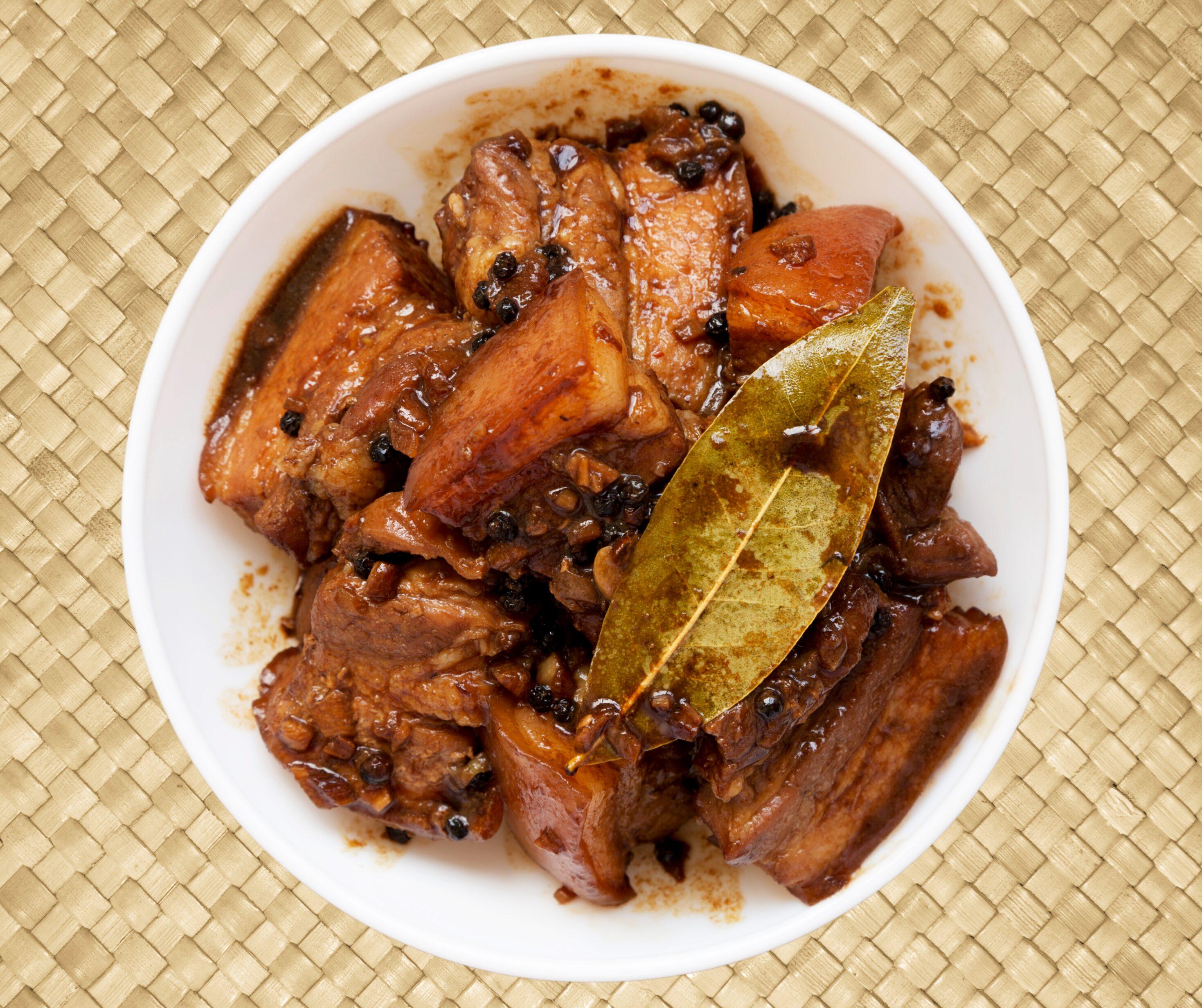More than just a dish, Adobo is a taste of home, history, and heritage—passed down through generations, uniting Filipinos across the world.
Steam rises from a pot in a modest Filipino kitchen, carrying with it the unmistakable aroma of garlic, vinegar, and bay leaves. Inside, tender meat simmers in a rich, dark sauce that speaks of centuries of tradition, adaptation, and culinary mastery. This is adobo, a dish that transcends its role as mere sustenance to embody the very essence of Filipino culture and identity.
In every Filipino household, from the narrow streets of Manila to the remotest barrios of Mindanao, adobo tells a story. It’s a tale that begins long before Spanish galleons first appeared on Philippine shores, weaving through centuries of colonial influence, and continuing to evolve in modern kitchens worldwide. But where did this beloved dish truly originate, and how has it maintained its place at the heart of Filipino cuisine?
The story begins in pre-colonial Philippines, where our ancestors developed sophisticated food preservation techniques suited to the tropical climate. Long before refrigeration, early Filipinos discovered that cooking meat in vinegar and salt not only extended its shelf life but also created flavors that would become foundational to Filipino cuisine. Ancient communities across the archipelago used native vinegars derived from palm sap and coconut, combined with sea salt, to preserve their food for long sea voyages and extended periods between hunts.
Archaeological evidence and historical records suggest that these preservation methods were already well-established when Spanish colonizers arrived in the 16th century. The Spanish encountered a cooking style that reminded them of their own adobado, a marination method using vinegar, olive oil, and spices. They called this Filipino cooking method “adobo,” but the similarity ended with the name. While Spanish adobado was primarily a marination technique, Filipino adobo evolved into a distinct cooking method where meat is braised in vinegar, incorporating native ingredients like coconut vinegar, peppercorns, and bay leaves.
The genius of Filipino adobo lies in its adaptability. The basic technique of cooking in vinegar and garlic remained constant, but communities across the archipelago made the dish their own. In the Bicol region, known for its love of coconut milk, adobo sa gata emerged, combining the tartness of vinegar with creamy coconut milk. The Visayan islands developed adobong puti, or white adobo, which omits soy sauce—a relatively recent addition to the recipe—maintaining the pure, sharp flavors of vinegar and salt.
Deep in the mountains of Batangas, some communities add turmeric to their adobo, creating a golden dish with earthy undertones. In Cavite, the addition of annatto seeds gives their adobo a distinctive reddish hue. Each variation tells a story of local taste preferences, available ingredients, and cultural influences that have shaped regional identities.
The basic elements of adobo—vinegar, garlic, bay leaves, and peppercorns—remain constant across these variations, creating a unifying thread in Filipino cuisine. Yet it’s the differences that make adobo truly special. Every family has their own recipe, passed down through generations, each claiming theirs as the definitive version. Some swear by apple cider vinegar, while others insist that native coconut or cane vinegar is the only acceptable choice. Debates rage over whether the sauce should be reduced until dry or kept brothier, whether the meat should be fork-tender or maintain some bite.

In recent years, adobo has transcended its humble origins to become a global ambassador for Filipino cuisine. International chefs and food critics have recognized its complex flavors and versatility. Modern Filipino restaurants worldwide now offer contemporary interpretations: adobo risotto, adobo tacos, even adobo ice cream. These innovations might raise eyebrows among traditionalists, but they demonstrate adobo’s remarkable adaptability and enduring appeal.
The dish has earned accolades from food magazines and international critics, who praise its perfect balance of sour, salty, and savory flavors. In 2021, the Philippine Department of Trade and Industry even attempted to standardize adobo’s recipe—a move that sparked passionate debates about the very nature of cultural cuisine and the importance of preserving regional variations.
Yet despite its global recognition and modern interpretations, adobo remains deeply personal to Filipinos. It’s comfort food that tastes like home, a dish that connects the global Filipino diaspora to their roots. In foreign lands, the smell of adobo cooking can trigger powerful memories of family gatherings and childhood kitchens.
What makes adobo truly remarkable is not just its flavor or its history, but its role as a living, evolving tradition. It represents both the resilience and adaptability of Filipino culture—how outside influences were absorbed and transformed into something uniquely Filipino. Each pot of adobo cooking today carries forward this legacy while creating new stories for future generations.
Perhaps the beauty of adobo lies in its refusal to be standardized. It remains as diverse as the Philippine archipelago itself, with each variation adding another layer to its rich cultural tapestry. Every Filipino family’s adobo recipe tells a story—of migration, of adaptation, of preservation, and of love passed down through generations.
As you savor your next plate of adobo, consider its journey through time: from ancient preservation technique to beloved comfort food, from humble home kitchens to prestigious restaurants worldwide. Then ask yourself: what story does your adobo tell?






